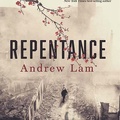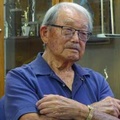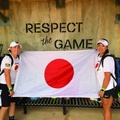You look at these pictures and they haunt you.
Who were these people? What were they thinking and feeling when the photos were made?
There is no hint of their thoughts at that moment. The expressions are deadpan. But it’s clear that these are not happy photos. There are no smiles among the adult subjects. Only a grim and bureaucratic type of coldness pervades them.
“The elders show the greatest concern in these pictures,” said David Reed, executive director of the Yuba Sutter Arts & Culture organization based in Marysville in Yuba County 40 miles north of Sacramento. “The younger (teenage) kids in the photos seem a little cockier, while the children, some of them look like they’re on their way to a summer camp.
But with the adults you can feel a sense of grief and loss,” Reed added.
In 1942 during World War II the U.S. Government decided that 100,000 Japanese Americans most of them U.S. citizens living along the West Coast were guilty of treason. They were deported to over a dozen guarded, wire-enclosed concentration camps many located in remote desert regions of the Southwest. Others were allowed to flee into the center of the country.
People were stripped of everything they had except what they could carry in a suitcase, losing their jobs, property and freedom. Before being moved by train or bus to permanent camps they were often kept in temporary holding pens. These were dishonestly and hypocritically dignified by calling them the innocuous sounding title of “assembly centers.” These facilities were sometimes located at horse race tracks where the inmates slept in horse stalls.
They spent several weeks here before being shipped off to permanent imprisonment.
But first they had to be photographed.
It remains unknown if these 100 photos of inmates in the Marysville area were taken for identification purposes or merely as some kind of perverted recording of the event. Some people in the photos have been identified. Others remain lost to history. Only their photo portrait remains to show who they once were.
“The photos were taken in either March or April of 1942,” Reed said. “We’re not sure what they were taken for, if there was a purpose, or they were just nice portraits of people before they went to the camps.”
A photographer long dead named Clyde Bush a Marysville photographer took the photos and though the original prints were lost the negatives were kept by Bush’s family members after his passing.
Sue Cejner-Moyers, president of the Yuba County Historic Resources Commission was contacted about the photo negatives which had been unknown to the public. They were donated to her organization.
“I had known of the existence of the photos for about six years,” Reed recalled. “Our organization is interested in local history. Sue showed them to me.”
The photos Reed described as straight portraits taken on 35 millimeter film.
“I’ve never seen the original prints made from the negatives so we don’t know if they were four-by-fives or eight-by-tens,” he said.
Yuba Sutter Arts & Culture paid for the negatives to be digitalized by Video Lab in Sacramento. Sam’s Club a Yuba City custom film developer then enlarged the digital photos and turned them into 20-by-30 prints.
“It cost us around $4,000,” Reed said.
Reed said Cejner-Moyers had gotten to know members of the Marysville Japanese American Citizens League (JACL) and told them about the existence of the photos. It was thought that the photos could be used as part of a memorial event.
“The photos were displayed in our art gallery in Marysville along with a story about how they came into being,” Reed said. “Most of the people in the photos have been identified. But we’d have someone come in, look at a photo and say, ‘That was my babysitter, or that was my neighbor.’”
Others in the photos remain unknown.
The prints were exhibited for a “Day of Remembrance” commemoration held in Marysville in February of 2018 to remember the incarceration of Japanese Americans locally and nationwide. Since then they have been stored at the Yuba Sutter Arts & Culture facility at 624 E. St. in Marysville.
“The 2018 exhibit was the first time the photos were shown and they take up a lot of space,” Reed said. “Today there is no permanent display. They are stored here. We can make them available to anyone who is interested in displaying them.”
Reed said the purpose of the Yuba Sutter Arts & Culture is to celebrate and support local art, artists and related organizations.
“We’re the only existing two-county (Yuba and Sutter) arts organization in the state and a part of the California Arts Council,” he said.
Reed started as a volunteer for the organization and has managed it for the past six years. Before that he was a marketing executive.
He indicated that the history of the Marysville area includes good stories, the not-so-good and the downright ugly including the imprisonment of Japanese Americans during World War II.
“Many of these people around here were rounded up and sent to Tule Lake,” Reed said.
Tule Lake was located on a barren, flat windswept plain in Modoc County about 35 miles south of the Oregon border in Northeastern California. The camp as with others was given a dishonest and innocent sounding name, the Tule Lake War Relocation Center. Instead of what it really was a concentration camp whose victims had been imprisoned because of race. They were arrested and imprisoned for no reason other than who they looked like racially and where their parents had come from.
Tule Lake was also a prison for those who were considered to be trouble makers, prisoners who protested their illegal incarceration or refused to sign a loyalty oath quiz (they felt they were already loyal). Such prisoners were called “no no boys.”
Some of the young men whose families had been imprisoned volunteered for service with the 442nd Regimental Combat Team and helped the U.S. to win World War II. The 442nd became one of the most highly decorated units in the U.S. Army.
Reed said in the Marysville area Japanese Americans before they were shipped to Tule Lake were first held at the Arboga Assembly Center.
“It was about five miles south of town and had been in the early days a Swedish (immigrant) colony,” Reed said. “During the 1930’s it was a migrant worker camp (with barracks). About 2,500 local Japanese Americans were rounded up here.”
Three years ago a memorial monument was dedicated at the Arboga Assembly Center site.
“A Memorial Park has been created,” Reed said. “The Marysville School District gave a long-term MOU (Memo of Understanding) to use the property. There are three huge steel silhouettes in the shape of barracks, and murals.”
Reed said you can use your smart phone and while walking a loop walk around the Memorial Park pass monuments where you can access a Q-R code (links to an on-line video). You can hear and see President Franklin D. Roosevelt in 1942 ordering the imprisonment with his Executive Order 9066. Another video shows the recollections of a survivor of the camps.
One of the murals four-feet-by-eight-feet in size has the 100 head-shot portrait photos.
The site is located on Broadway just east of Feather River Boulevard.
“You can see the photo portraits standing out in a field,” Reed said.
The project was funded by the California State Library at a cost of $45,000.
One of the survivors of the Tule Lake Camp is 100-year-old Jim Tanimoto who lives in Gridley, a small town of about 7,000 in Butte County. Reed said Tanimoto viewed the photos.
“He wasn’t in the pictures but he was at Tule Lake,” Reed said. “His family took a great loss during and after World War II. He’s a very positive and upbeat person. But when he saw the exhibit you could tell he was very concerned.”
Reed said the Yuba County area today is more diverse than some might imagine with whites making up 50% of the population, Hispanics with 30% and Asians 13% including those of Japanese, Chinese and Sikh (South Asian Indian) residents.
He indicated that the photos will remain a thought-provoking symbol of the World War II Japanese American imprisonment period.
“It’s powerful looking at the photos,” he said. “You have two walls of people whose faces are looking right at you. Having the photos gives these people a face and preserves them.”
* * * * *
Persons interested in using digital files of the photos may call Reed at (530) 742-2787.
Donations to the Yuba Sutter Arts & Culture are gratefully accepted. To donate or for more information go to organization’s website at yubasutterarts.org.
*This article was originally published in the NikkeiWest.
© 2023 John Sammon / NikkeiWest






